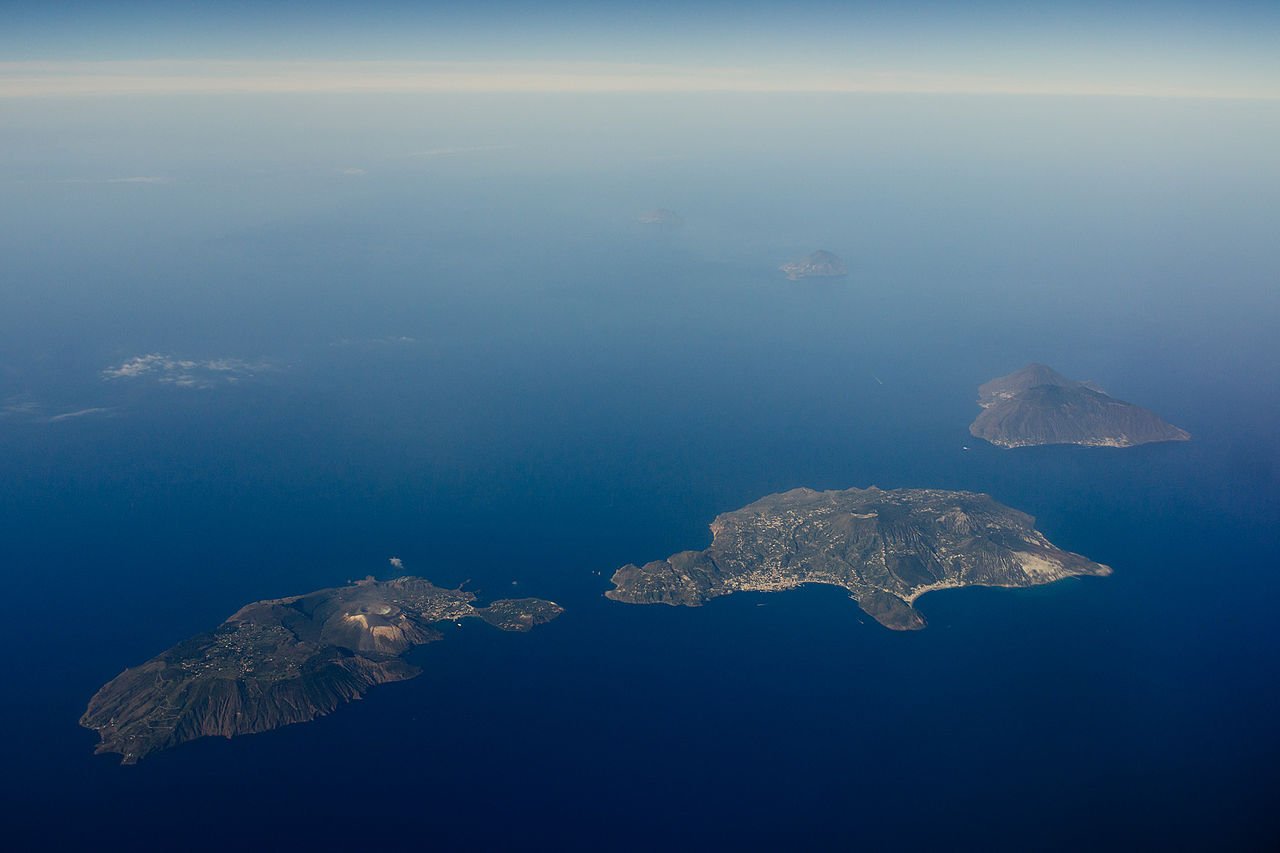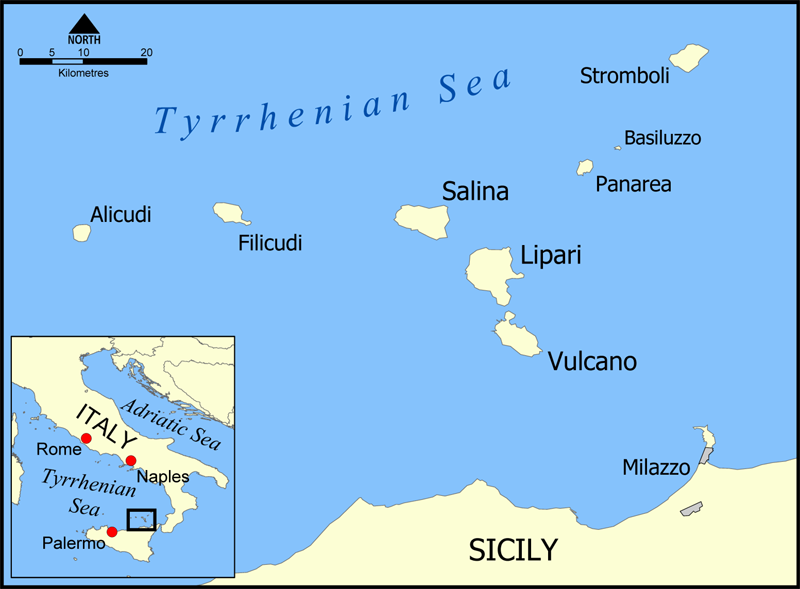
The Aeolian Islands are a collection of seven islands in the Tyrrhenian Sea, north of Sicily. In ancient times, the islands were colonized and inhabited by the ancient Greeks.
The islands also play an interesting role in Greek mythology. They were linked with two gods, Aeolus and Hephaestus, the latter of whom is said to have aided Odysseus during his arduous journey to return home.
Due to their strategic position between Sicily and the Italian mainland, the Aeolian Islands were hotly contested between the Romans, Carthaginians, and Greek settlers.
Greek settlement
The ancient names of the seven Aeolian Islands were Lipara (Lipari), Strongyle (Stromboli), Hiera (Vulcano), Didyme (Salina), Euonymos (Panarea), Erikussa (Alicudi), and Phoinikussa (Filicudi).
The early inhabitants of the islands appear to have been a combination of Italic tribes and Greek settlers, although piecing together the islands’ bronze age history is difficult. The earliest settlers may have come to the islands from Sicily between 4000 and 2500 BC.
The existence of Mycenean ceramics in the islands’ late bronze age archaeological record suggests a strong connection with ancient Greece. Sometime between 1600 and 1200 BC, Greeks appear to have settled on the Aeolian Islands.
The early Greek settlers took advantage of the widespread obsidian deposits, created by volcanic activity on the islands. The ancient Greeks, who were capable seafarers, traded obsidian across the Mediterranean.
Given their position between Sicily and the mainland of southern Italy, which was also widely settled by Greeks, the Aeolian Islands were in a good position for maritime commerce and enabled the Greeks to trade with other civilizations like the Etruscans.
Although the earlier period of the islands’ history is quite unclear, Greek settlement was firmly established by around 600 BC. A colony was founded on Lipara by settlers from Knidos, an ancient Greek city in Asia Minor.
The settlers from Knidos were themselves thought to have originally been Lacedaemonians (Spartans). Settlement spread to the other islands with the exception of Hiera, which was too high in sulfur. However, this was also a lucrative source of trade for the Aeolians.

The Aeolian Islands in mythology
In Greek mythology, the islands were named after the god Aeolus who was the divine keeper of the winds and ruler of the mythical isle of Aeolia.
In Homer’s Odyssey, the eponymous hero visits Aeolus on his mythical isle during his desperate voyage home to Ithaca. To help him on his journey, Aeolus gives Odysseus a bag containing all of the storm winds.
However, the companions in Odysseus open the bag in search of treasure. As a result, the ship is blown all the way back to Aeolia.
Due to the volcanic activity on the Aeolian Islands – particularly Strongyle and Hiera – the ancient Greeks and Romans thought that Hephaestus (Vulcan), the god of blacksmiths and metalworkers, kept an entrance to his forges there.
See all the latest news from Greece and the world at Greekreporter.com. Contact our newsroom to report an update or send your story, photos and videos. Follow GR on Google News and subscribe here to our daily email!



